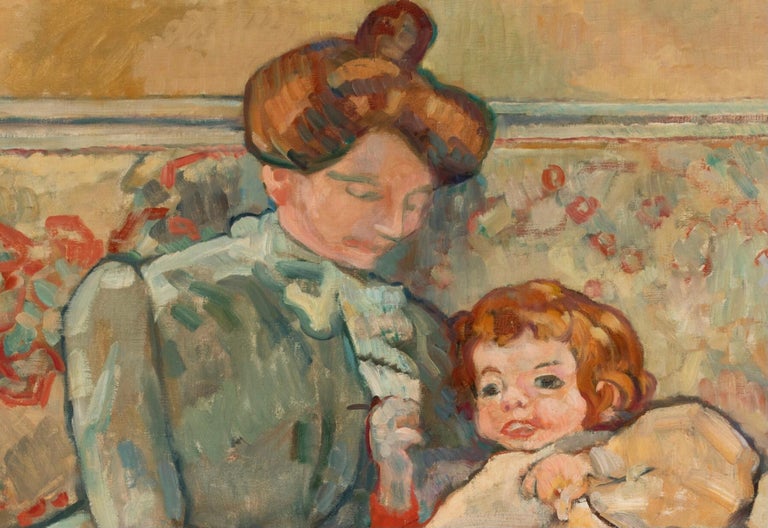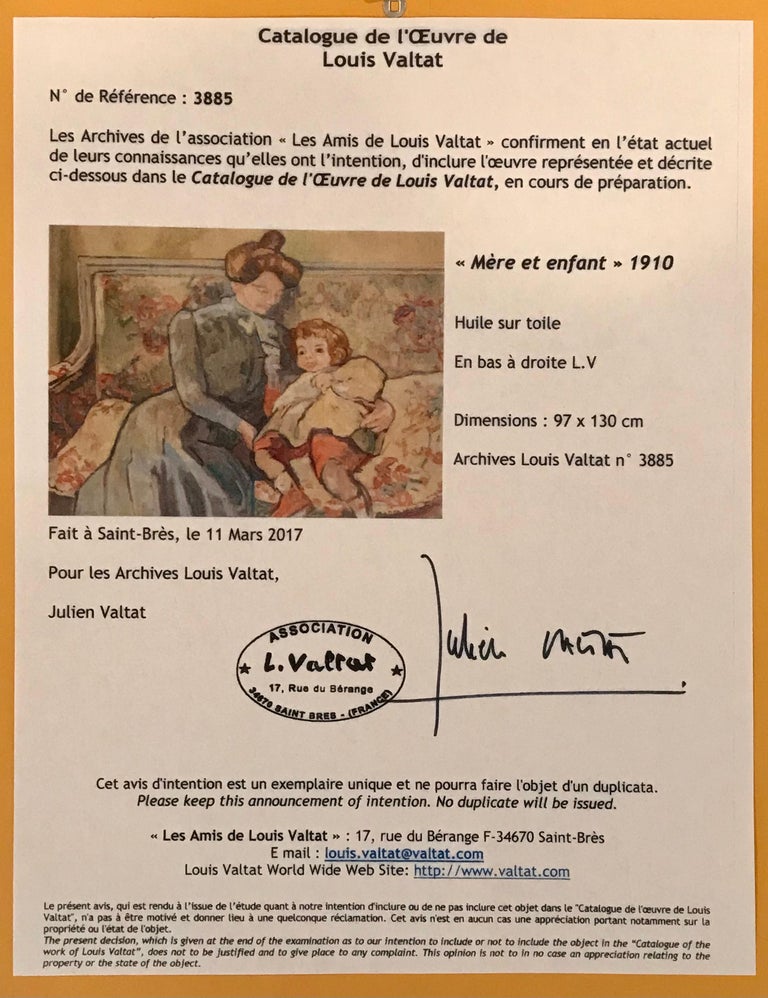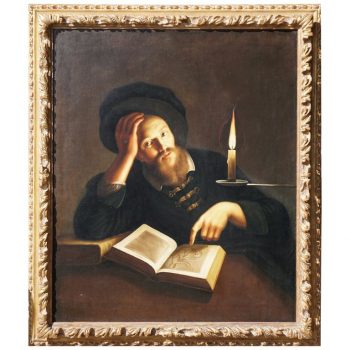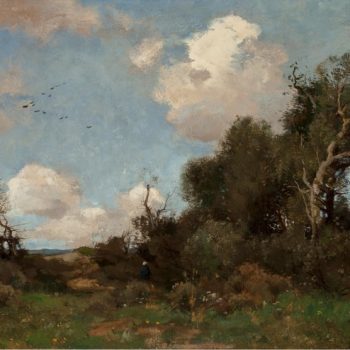Description
Louis Valtat (French, 1869-1952) Fauvist Oil painting of a mother and child.
A very large painting by Louis Valtat titled Mere et Enfant (Mother and Child) depicting Valtat’s wife, Suzanne Noel married in Versailles in 1900 and a young infant sitting on a couch. The style looks to be an homage to Pierre Auguste Renoir, a colleague and very good friend of Valtat.
Mère et enfant, 1910
Oil on canvas
Canvas: 38-1/2 x 51 inches (97.8 x 129.5 cm)
Framed Dimensions 47.5 X 60.75 X 2.5 Inches
Initialed lower right: L.V.
Provenance.
Juster Gallery, New York;
Private collection, Houston, Texas, acquired from the above, 1962;
Estate of the above
Heritage Auctions, Dallas, Texas, June 8, 2018, lot 68012;
Private collection, Utah, acquired from the above.
Literature.
This lot is accompanied by a photocopy of a March 11, 2017, letter from Les Amis de Louis Valtat stating that this painting will be included in the Catalogue de l’Oeuvre de Louis Valtat. The painting is registered as no. 3885 in the Archives Louis Valtat.
Condition.
Unlined canvas. Very good to excellent riginal condition. Black light shows no inpaint. A very few scattered pinpoint losses. A little dirty and dust accretions on verso.
Louis Valtat was among the pioneers and most significant proponents of early 20th-century Modernism in France. As a young student in Paris, Valtat became associated with a rebellious group of student artists known as Les Nabis, including Maurice Denis, Pierre Bonnard (see lot 69010), and Edouard Vuillard, who had banded together at the Académie Julian and forged a cutting-edge approach to art. Though they retained the basic elements of representation, the Nabis simplified and flattened their shapes, created an unrealistic sense of space, and used patterning and unexpected colors, all to create a decorative surface directly inspired by Japanese woodblock prints.
Armed with the tenets of the Nabis and under the additional influence of Van Gogh and the Pointillists, Valtat began to develop his own distinctive style, which received another injection of inspiration in 1905. That year he participated in the groundbreaking first exhibition of the Fauvist group at the Salon d’Automne along with Matisse, Vlaminck, and Derain, among others. The term Fauves was coined by a critic writing pejoratively about these “Wild Beasts” and their use of unnatural and unexpectedly bold, painterly shapes and fiery colors. Although he participated in the initial exhibition, Valtat was only peripherally associated with the movement; he adopted their colors and forms, but never fully embraced the degree of distortion in line and abandonment of local color espoused by true disciples of the group.
We see Valtat’s synthesis of these movements demonstrated in the present work, a remarkable example showcasing his history with the Nabis and his dip into Fauvism. The bold colors and painterly treatment bring to life a tender moment between what is likely his own wife and son, whom Valtat painted often at their home in Versailles. The large painting retains an intimate feel due to the tightened field of view and moves beyond an intellectual exercise to an interpersonal one; Valtat brings the viewer into the scene with his placement of the lower edge of the picture plane, inviting us to sit across from his family and share in this warm glimpse of his personal life.













